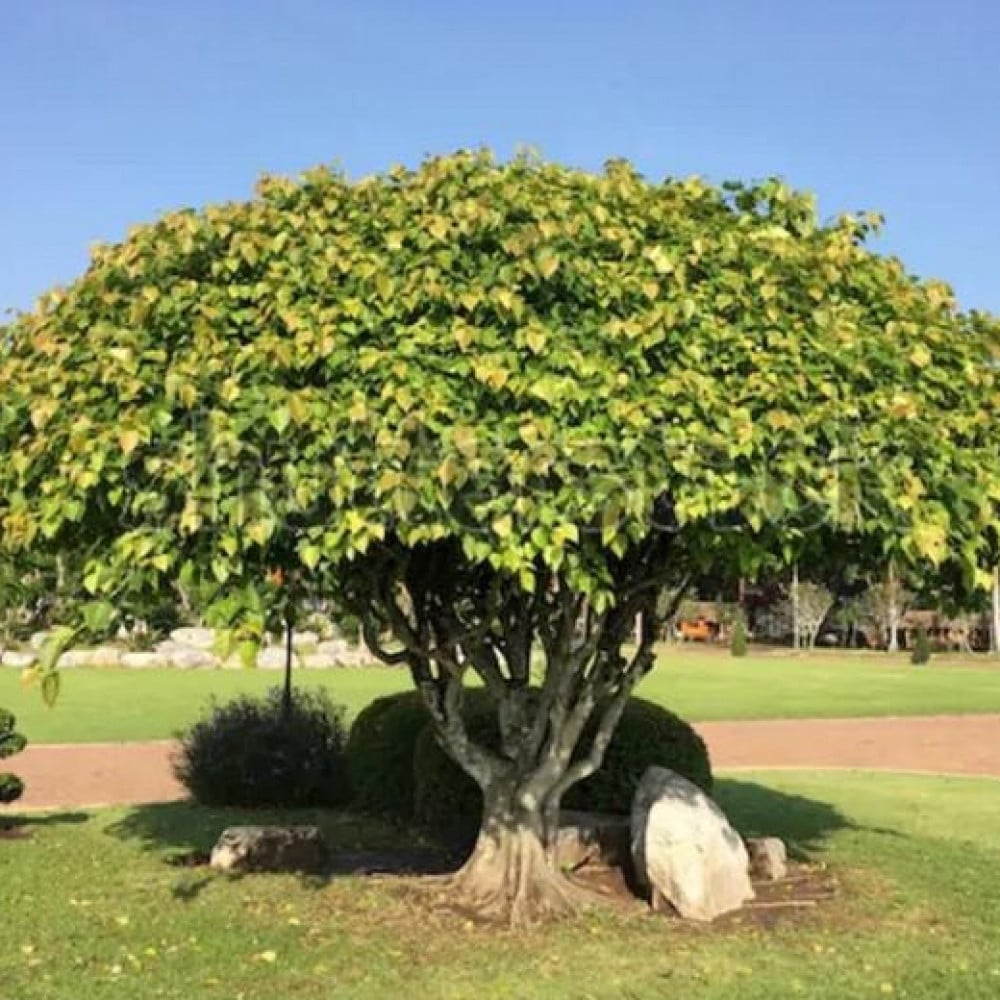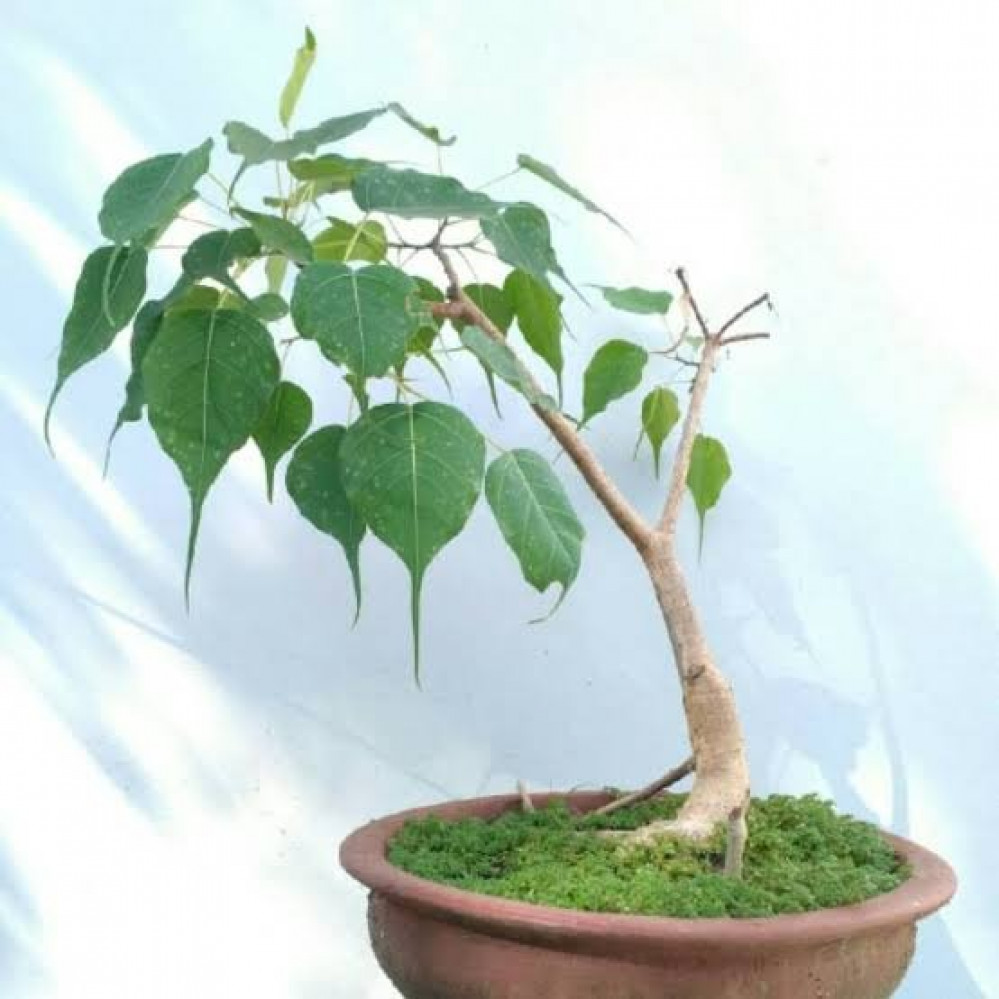عدد 100 بذرة
7:00 S.R
بذور
لسان العصفور
الإسم الشائع : لسان العصفور.
Ficus religiosa الإسم العلمي :
الموطن الأصلي لشجرة لسان العصفور شبه القارة الهندية وجنوب شرقيآسيا. وهو نبات جميل، ضخم قائم النمو، أوراقه شبه متساقطة، وفيالرياض يصل ارتفاعه إلى نحو 20 م وعرضه إلى نحو 10 م. ويشكل الجذعجزءاً كبيراً من حجم الشجرة وقد يصل قطره إلى نحو 3 م. والأوراق متدليةجميلة مميزة، خضراء داكنة، وذات تعريق جذاب، ولها طرف طويل مستدق،يشبه لسان الطير، ومن هنا جاءت تسميته لسان العصفور بالعربية. وطولالورقة 15 سم بيضوية الشكل وعرضها 12 سم. والأوراق الحديثة ورديةاللون. والأزهار مخضرة، غير ملفتة للنظر، وتظهر في فصل الربيع. والثمار تينية جالسة تتحول إلى اللون الأرجواني عند النضج. ويفضلالنبات المواقع المشمسة، والتربة العميقة، والخصبة والقلوية الخفيفة. والجذور سطحية، كما تنتج جذوراً داعمة فوق سطح التربة عند اكتمالالنمو. واعتماداًعلى طبيعة الموقع الذي تزرع فيه، فقد تسبب الجذورأضراراً تتمثل في تحطيم الأرصفة، وبخاصة إذا كان الحيز الذي تنمو فيهالشجرة ضيقاً. وتتطلب الشجرة رياً منتظم، لكنها لا تتحمل الغدق، وتتحملالملوحة والصقيع بدرجة متوسطة. ويكون التكاثر بالبذور، أو العقل الساقيةصلبة الخشب، أو الترقيد الهوائي. والنبات عرضة للإصابة بالعناكبالحمراء. ويعمل التقليم على المحافظة على شكل الشجرة، مع وجوب الحذرمن الإخلال بشكلها الطبيعي. ويمكن استخدام لسان العصفور نموذجاًنباتياً مميزاً في المنتزهات والحدائق الكبيرة. ويصلح النبات أيضاَ أنيكون شجرة ظل في الطرقات، ويمكن زراعته في المناطق الحضريةالمفتوحة، وأينما وجد مكان متسع، وفي جزر الشوارع الفسيحة.
The sparrow tongue is native to the Indian subcontinent and Southeast Asia. It is a beautiful plant, huge, straight-growing, semi-deciduous leaves, and in Riyadh it reaches a height of about 20 meters and a width of about 10 meters. The trunk forms a large part of the size of the tree, and its diameter may reach about 3 meters. The leaves are distinctively beautiful drooping, dark green, with attractive veining, and have a long tapering tip, similar to a bird's tongue, hence the name of the bird in Arabic. The paper is 15 cm long, oval, and 12 cm wide. Modern leaves are pink. The flowers are greenish, not striking, and appear in the spring. And the fruits are seated figs that turn purple upon ripening. The plant prefers sunny locations, with deep, fertile and light alkaline soils. The roots are shallow and produce support roots above the soil surface when growth is completed. Depending on the nature of the site in which it is planted, the roots may cause damage by breaking the sidewalks, especially if the area in which the tree grows is narrow. The tree requires regular irrigation, but it does not tolerate waterlogging, and it tolerates salinity and frost of a moderate degree. Propagation is by seed, solid wood stem, or air laying. And the plant is susceptible to red spiders. And pruning works to preserve the shape of the tree, with the need to be careful not to disturb its natural shape. The bird's tongue can be used as a distinct botanical model in large parks and gardens. The plant is also suitable as a shade tree in the streets, and it can be grown in open urban areas, wherever there is ample space, and on the wide street islands.




التعليقات
١ تعليق
علي ابومحمد
منذ سنة
جيده